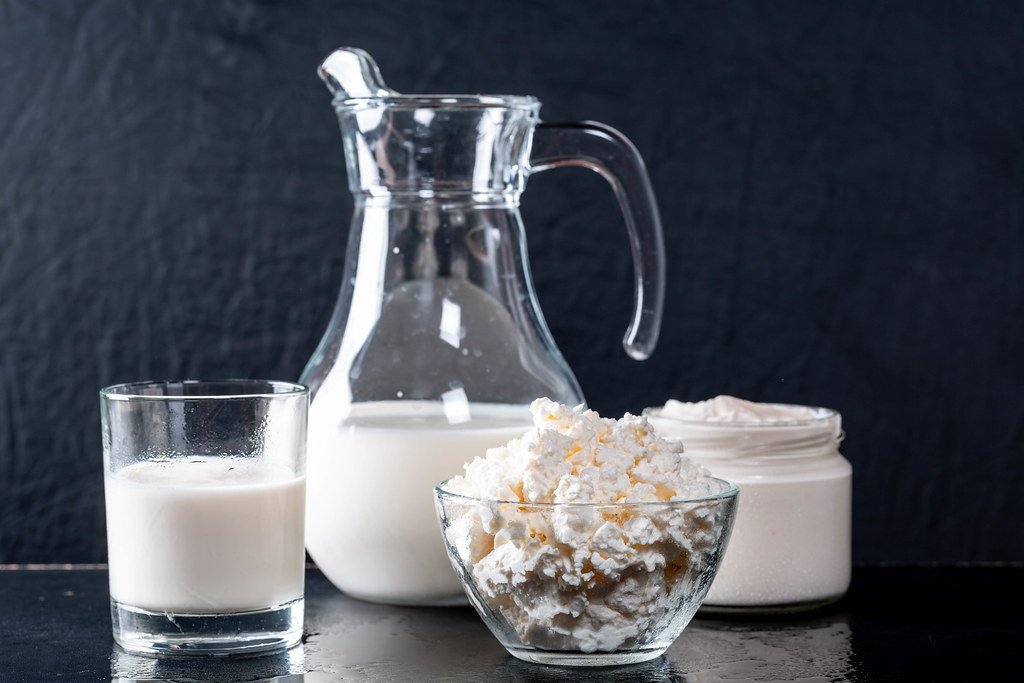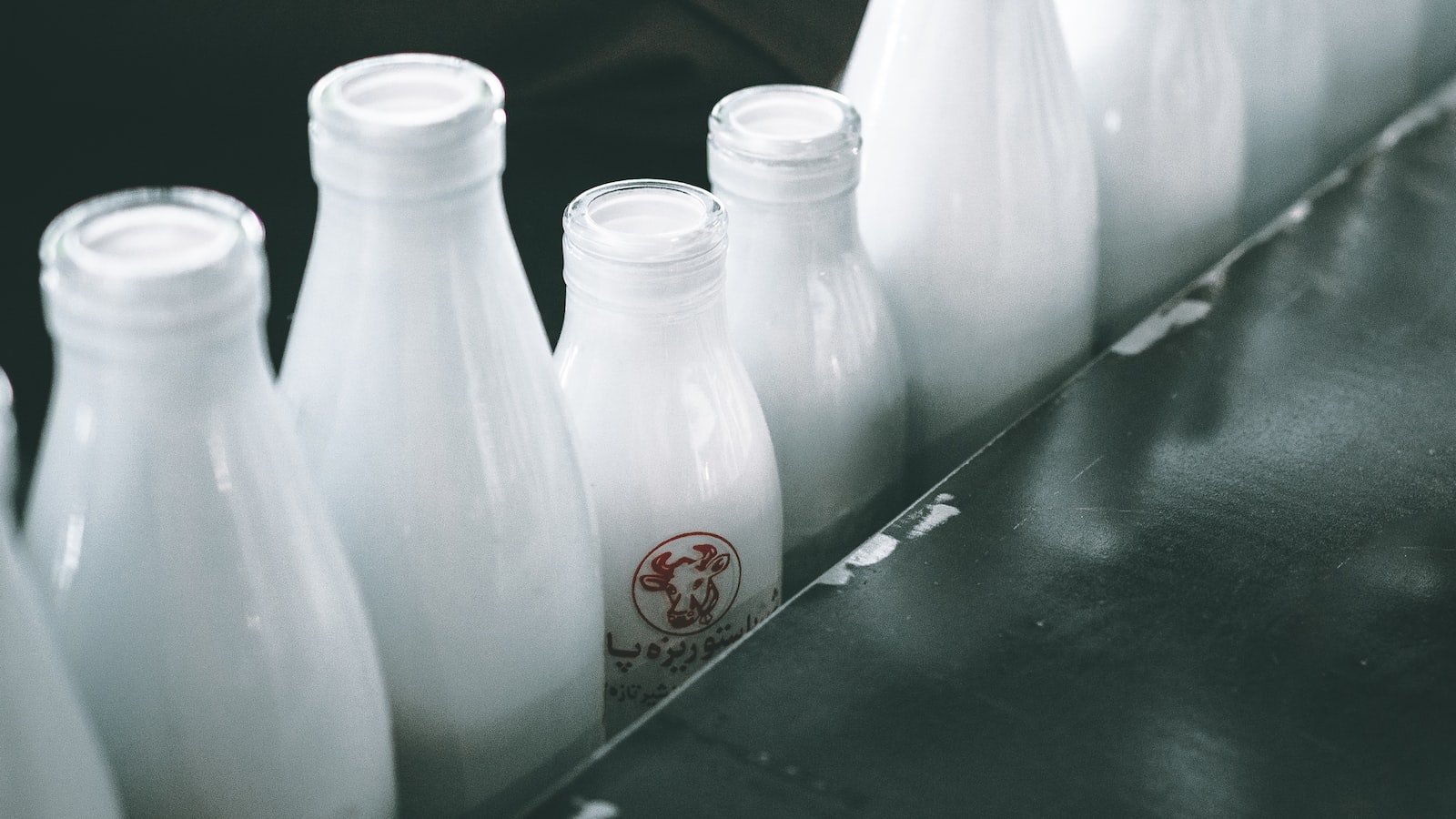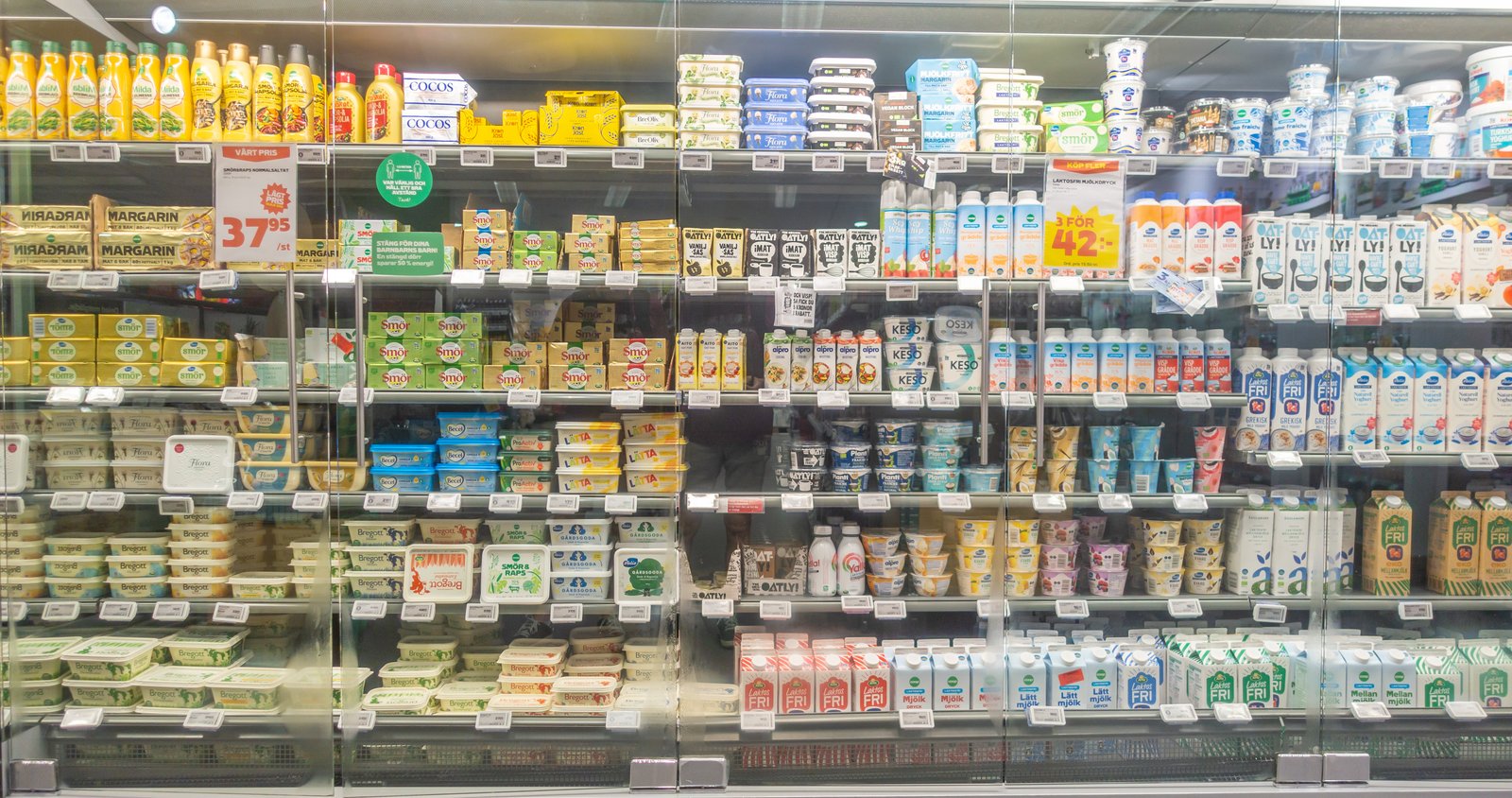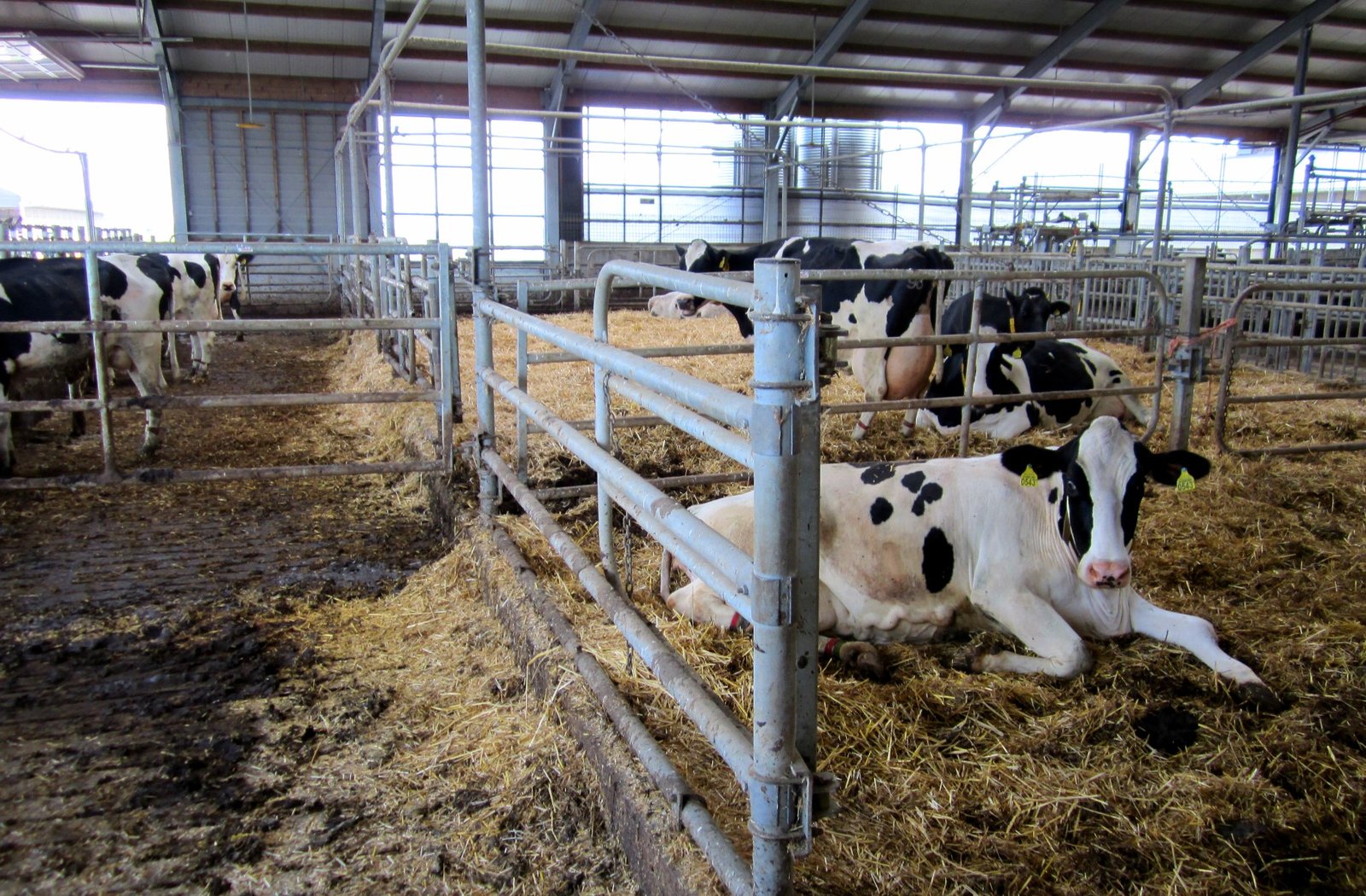Milk, our trusted and creamy companion since our early days, has now found itself facing some tough competition. As we embark on an ever-evolving era where dietary preferences are as diverse as the colors of a rainbow, the demand for alternatives to traditional dairy products has skyrocketed. Enter a captivating world where almonds transform into delightful milky concoctions, oats whisper in creamy symphonies, and coconuts crash the dairy party with unrivaled splendor. Today, we embark on a fascinating exploration of dairy alternatives – unravelling the secrets, unlocking the nutritional value and discovering the possibilities that lie within these milky substitutes. So, put on your adventurous palate, as we divine the captivating realm of alternatives that cater to all those seeking a change from the familiar embrace of traditional dairy. Welcome to the realm where cow’s milk is not the only star.
Exploring the Various Dairy Alternatives: A Comprehensive Guide
When it comes to dairy alternatives, the options seem endless. Whether you’re lactose intolerant, following a vegan diet, or simply looking to switch things up, this comprehensive guide will introduce you to a world of delicious options beyond traditional dairy products. Here, we delve into a variety of dairy substitutes that not only offer a wide range of flavors, but also provide exceptional nutritional benefits.
The Creamy Marvels: Nut Milk
One of the first alternatives that come to mind for many is nut milk. Derived from almonds, cashews, or even coconuts, nut milk is a versatile and creamy option that adds a delightful touch to your favorite drinks, cereals, or recipes. With its smooth texture and nutty undertones, this non-dairy alternative packs a punch of vitamins and minerals, such as vitamin E and magnesium. Plus, it provides a great source of healthy fats without any cholesterol…
The Protein-Packed Surprise: Soy
If you’re on the lookout for a dairy alternative that delivers an impressive protein punch, then look no further than soy. Made from soybeans, this plant-based alternative is not only packed with essential amino acids, but also boasts a smooth and silky texture that works perfectly in coffee, baking, or as a base for delectable desserts. Besides, soy milk is often fortified with calcium and vitamin D, making it a strong contender for those aiming to maintain strong bones and teeth.
The Rich Indulgence: Coconut Cream
If you’re a fan of creamy, luxurious textures, then coconut cream is your taste bud’s paradise. Extracted from mature coconuts, this indulgent dairy alternative adds a tropical twist to your favorite recipes and beverages. Its velvety texture and subtly sweet taste lend themselves perfectly to curries, smoothies, or even homemade ice creams. Additionally, coconut cream is lauded for its medium-chain triglycerides, which are known for their potential energy-boosting effects and metabolism support.
With so many dairy alternatives to choose from, you can now open your kitchen to a diverse world of flavors and textures. Whether you opt for nut milk, soy, or decadent coconut cream, rest assured that these delicious alternatives not only cater to your dietary needs, but also add a delightful twist to your culinary adventures. So, go ahead and explore these dairy substitutes, and embark on a flavorful journey that will leave your taste buds wanting more.

Comparing Nutritional Profiles: Evaluating Milk Substitutes for Optimal Health
When it comes to maintaining a healthy lifestyle, selecting the right milk substitute can be a game-changer. With numerous options available in the market today, it’s crucial to evaluate their nutritional profiles and choose what aligns best with your health goals. Whether you are lactose intolerant, follow a vegan diet, or simply want to explore different plant-based alternatives, examining the nutritional content of milk substitutes can ensure you make a well-informed decision.
To understand the optimal health benefits offered by various milk substitutes, let’s delve into their nutritional components. Almond milk, a popular dairy alternative, is rich in vitamin E and heart-healthy fats. Its low-calorie content and high calcium concentration make it ideal for those aiming to manage weight while supporting bone health. Meanwhile, soy milk, another widely consumed alternative, packs a protein punch while containing essential amino acids. Its high levels of iron, vitamin B12, and potassium contribute to improved energy levels and overall well-being.
For individuals with nut allergies, oat milk offers a creamy and nutritious alternative. This choice boasts a high fiber content, which aids in digestion and helps maintain a healthy gut. Additionally, oat milk is often fortified with calcium, vitamin D, and riboflavin to mimic the nutritional benefits of dairy milk. Coconut milk, on the other hand, is indulgently rich in flavor and healthy fats. It provides medium-chain triglycerides (MCTs), which can boost metabolism and promote heart health.
In conclusion, the world of milk substitutes provides a diverse array of options that cater to different dietary needs and preferences. By evaluating their nutritional profiles, you can select the best milk substitute to optimize your health. Remember to incorporate these substitutes mindfully into your diet and consult with a healthcare professional if needed. Whether you’re after the creaminess of almond milk, the protein punch of soy milk, the gut-friendly oats, or the richness of coconut milk, making an informed choice empowers you on your journey toward optimal health.

Uncovering the Benefits of Plant-Based Dairy Alternatives for the Environment
As consciousness about the environmental impact of our dietary choices continues to grow, plant-based dairy alternatives have emerged as a sustainable solution that promises numerous benefits for the planet. Let’s take a dive into the remarkable advantages these alternatives bring to the table.
Reduced Greenhouse Gas Emissions
One of the most significant environmental benefits of plant-based dairy alternatives is their significantly lower greenhouse gas emissions. Unlike traditional dairy products, which require large-scale farming and livestock production, plant-based alternatives like almond, oat, or soy milk contribute far less to greenhouse gas emissions. By making the switch, individuals can actively reduce their carbon footprint and help combat climate change.
Preservation of Natural Resources
Plant-based dairy alternatives also play a crucial role in preserving natural resources. Compared to traditional dairy production, which demands vast amounts of water, land, and feed crops for livestock, plant-based alternatives require considerably fewer resources. The production of plant-based milk consumes less water, requires less land for cultivation, and eliminates the demand for animal feed. Choosing these alternatives promotes sustainable land management and conserves precious resources for future generations.
Biodiversity Conservation
Another often overlooked aspect of plant-based dairy alternatives is their positive impact on biodiversity conservation. By reducing the demand for large-scale animal farming, which requires deforestation and land clearance, we can protect vital ecosystems and preserve biodiversity. This shift towards plant-based alternatives helps maintain the delicate balance of ecosystems, safeguarding endangered species and protecting the natural habitats they depend on for survival.

Making Informed Choices: Selecting the Right Dairy Alternative for Your Needs
Exploring alternatives to traditional dairy products can be both exciting and challenging. With an abundance of options available, choosing the right dairy alternative that suits your individual needs can make a significant difference in your overall well-being. Whether you’re lactose intolerant, following a plant-based diet, or simply looking to switch things up, making informed choices is key. So, let’s delve into this world of dairy alternatives and find the perfect match for you!
Understanding your dietary needs:
Different individuals have varying dietary requirements, and it’s crucial to consider them when selecting a dairy alternative. Here are some factors to keep in mind:
- Allergies and intolerances: If you’re lactose intolerant or allergic to dairy, finding alternatives free from lactose and allergens is essential. Opt for options like almond milk, soy milk, or oat milk.
- Health goals: If you’re aiming for certain health goals, such as reducing cholesterol, consider low-fat alternatives like skim milk or soy milk.
- Flavor preferences: Taste is subjective, so it’s important to find a dairy alternative that suits your palate. Try almond milk for a nutty flavor, coconut milk for creaminess, or even rice milk for a more neutral taste.
Understanding the nutritional aspect:
While taste is important, evaluating the nutritional value of dairy alternatives is equally crucial. Here are some factors to consider:
- Calcium: Look for fortified options that provide a good amount of calcium, as it’s essential for bone health. Many dairy alternatives, such as soy milk or fortified almond milk, offer the necessary calcium.
- Protein: If you rely on dairy as a protein source, consider alternatives like hemp milk or pea milk, which contain higher protein content.
Exploring versatility and usage:
Beyond nutritional value, it’s worth exploring the versatility and usage of dairy alternatives to match your lifestyle. Here are some points to think about:
- Cooking and baking: If you love to experiment in the kitchen, consider dairy alternatives that can be easily used in recipes without compromising taste and texture. Options like coconut milk or cashew milk often work well as substitutes in cooking and baking.
- Coffee and tea: For those who enjoy a splash of milk in their morning cup of joe or afternoon tea, try alternatives like oat milk or almond milk, which can provide the desired consistency and taste.
Remember, making an informed choice when selecting a dairy alternative can open up a world of possibilities for your taste buds and personal well-being. By understanding your dietary needs, considering the nutritional aspect, and exploring the versatility of these alternatives, you can find the perfect dairy substitute that enhances your overall food experience. So go ahead, be adventurous, and embark on a journey of delicious and healthy alternatives to dairy products!

Tips for Incorporating Dairy Alternatives into a Balanced Diet
Transitioning to a dairy-free diet can seem daunting, but with a little creativity, you can easily incorporate dairy alternatives into your balanced meals. Whether you have lactose intolerance, prefer a vegan lifestyle, or simply want to explore new flavors, these tips will help you embrace the world of dairy-free deliciousness without compromising nutrition.
Experiment with Plant-Based Milks: Say goodbye to cow’s milk and open yourself up to a myriad of exciting alternatives! From creamy almond milk to protein-packed soy milk, the options are endless. Use plant-based milks in your morning coffee, smoothies, cereals, and even in baking to add a touch of sweetness and richness to your favorite recipes.
Try Dairy-Free Yogurts: Dive into the creamy delight of dairy-free yogurts to experience a burst of flavors. Made from ingredients like coconut, almond, or soy, these yogurts offer a refreshing twist to your daily snack. Enjoy them alone, topped with fresh fruits, or as a scrumptious addition to your smoothies for a healthy and nutritious boost.
Get Cheesy with Dairy Alternatives: Who said you have to give up the joy of cheese in a dairy-free diet? Whether it’s made from cashews, nutritional yeast, or coconut, dairy-free cheeses have come a long way in replicating the melty, gooey goodness we all love. Use vegan cheese in your salads, sandwiches, and pizzas to add that delightful touch of flavor without compromising on taste.
Blend in Creamy Spreads and Butters: If you’re longing for rich spreads to slather on your morning toast or bagels, look no further! Dairy-free alternatives such as almond butter, cashew butter, or avocado spread can provide a creamy and luscious texture to your favorite breakfast treats. Not only will these options make your taste buds dance, but they also offer a healthy dose of essential fats.
By embracing dairy alternatives, you can discover a world of exciting flavors while maintaining a balanced diet. Be adventurous, try new products, and find the alternatives that suit your taste buds and dietary needs. Remember, incorporating dairy-free options into your meals is a journey towards exploring diverse culinary possibilities and embracing a healthier lifestyle.
Key Takeaways
As we conclude our exploration into the world of dairy alternatives and their nutritional value, it becomes evident that there is a milk substitute out there for everyone. From the creamy richness of almond milk to the unique tanginess of coconut milk, the options are as diverse as our taste buds.
In this journey, we have unraveled the secrets behind these plant-based alternatives, discovering the wealth of nutrients and health benefits they offer. While they may not contain the exact same profile as traditional cow’s milk, these substitutes prove to be formidable contenders in the world of nutrition.
As we bid farewell to the world of dairy, it is important to note that the growth of dairy alternatives is not merely a fad. It is a testament to the ever-evolving preferences and needs of a growing number of individuals seeking lactose-free, vegan, or simply different options. Whether you are lactose-intolerant, following a plant-based lifestyle, or simply curious, the world of milk substitutes awaits your exploration.
So, as you venture forth into the aisles of your local grocery store or embark on daring kitchen experiments, remember to always prioritize taste, nutritional balance, and personal preference. Don’t be afraid to boldly discover new horizons, challenge your taste buds, and embrace the blossoming world of dairy alternatives.
The wide array of milk substitutes promises to revolutionize the way we consume dairy, bringing with it options that cater to a wide range of dietary needs and taste preferences. While the traditional jug of cow’s milk may still hold a special place in our hearts, we can now embrace a world where almond, soy, oat, and rice milk are as common and beloved.
So, raise your glass to the versatility and adaptability of dairy alternatives, to the excitement of creating milk mustaches with a variety of flavors, and to the freedom of choice they offer. What may have started as a quest for the perfect milk substitute has evolved into a captivating expedition, showcasing the innovative spirit and endless possibilities of human creativity.
As we conclude this adventure, we invite you to embark on a personal journey, one that explores the depths of the milk aisle, experiments in the kitchen, and redefines the notion of what it means to pour a glass of milk. Embrace the change, savor the flavors, and may your exploration of dairy alternatives bring you moments of delight and perhaps even a newfound appreciation for the endless wonders that lie beyond the traditional milk carton. Cheers to the future of dairy, where the alternatives are as abundant as our imaginations!

